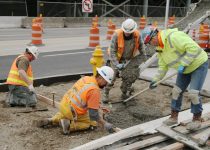Deep Dive: Advanced Techniques in Sewer Line Restoration
Sewer line issues are a homeowner’s silent nightmare, often emerging unexpectedly and requiring immediate attention to prevent extensive damage and ensure the household’s smooth operation. Traditional methods of sewer repair often involved significant excavation, causing disruption and damage to landscaping.
However, the field of sewer line restoration has seen remarkable advancements, offering less invasive, more efficient solutions. This article explores the cutting-edge techniques transforming sewer line restoration, ensuring homeowners can navigate these waters with greater ease and confidence.
The Evolution of Sewer Line Repair
Traditionally, Sewer line repair were synonymous with extensive digging, which could disrupt daily life and leave a significant mark on one’s property. However, as technology has advanced, so have the methods for diagnosing and repairing sewer issues. Innovations now allow for minimal disruption while effectively addressing the root causes of sewer line problems.
Trenchless Technology: A Game Changer
Trenchless repair methods have revolutionized sewer line restoration, offering solutions that require little to no digging. This section highlights two key trenchless techniques that have changed the landscape of sewer repair.
Cured-In-Place Pipe (CIPP) Lining
CIPP lining is a method that essentially creates a new pipe within the old one. A resin-saturated felt tube is inserted into the damaged pipe, which is then cured in place, forming a robust, seamless pipe. This method is ideal for repairing cracks, holes, and joint failures, extending the life of the sewer line without the need for excavation.
Pipe Bursting
Pipe bursting is another trenchless technique, particularly suited for situations where the sewer line is severely damaged or needs upsizing. This method involves breaking the old pipe while simultaneously pulling a new pipe into place. Pipe bursting is efficient, minimizes disruption, and is a sustainable option since it reduces the need to dispose of old piping material.
Robotic Cutting and Cleaning
Advancements in robotic technology have provided additional tools for sewer line restoration. Robotic cutters can navigate sewer lines, cutting away intruding tree roots or clearing blockages without damaging the pipe. This precise approach not only addresses immediate issues but also prepares pipes for further restoration processes like CIPP lining.
Hydro Jetting: High-Pressure Cleaning
Before any repair or lining process, it’s crucial to thoroughly clean the pipes. Hydro jetting uses high-pressure water streams to remove debris, grease, and roots from sewer lines. This method ensures the pipe is clean and smooth, optimizing the effectiveness of repair techniques like CIPP lining.
Sewer Camera Inspections: Pinpointing Problems
Modern sewer repairs often begin with a camera inspection. High-definition cameras on flexible rods are inserted into the sewer line, providing real-time visuals of the pipe’s condition. This non-invasive diagnostic tool allows for accurate identification of issues and precise planning of repair strategies.
Addressing Root Intrusions
Tree root intrusion is a common cause of sewer line damage. Alongside mechanical root removal and hydro jetting, chemical treatments can discourage root regrowth without harming the tree or the environment. These treatments, used judiciously, can be part of a comprehensive approach to maintaining clear sewer lines.
The Importance of Maintenance
While advanced repair techniques can address existing problems, regular maintenance is key to preventing future issues. Scheduling routine inspections and cleanings can identify potential problems before they escalate, ensuring the longevity and efficiency of sewer lines.
Selecting the Right Repair Solution
The choice of repair method depends on several factors, including the extent and type of damage, the sewer line’s location, and budget considerations. A professional assessment is crucial in determining the most appropriate, cost-effective approach for each unique situation.
Environmental and Regulatory Considerations
Advanced sewer repair techniques not only offer efficiency and reduced disruption but also align with environmental and regulatory standards. Trenchless methods, in particular, minimize soil disturbance, reduce waste, and are often preferred in sensitive ecological areas.
Preparing for Sewer Line Restoration
Homeowners considering sewer line restoration should start by consulting with experienced professionals who specialize in modern repair techniques. Obtaining multiple assessments and quotes can provide a clearer picture of the issues and the best course of action. Additionally, understanding the scope of work, duration, and impact on daily life is essential for a smooth restoration process.
Conclusion
The advancements in sewer line restoration techniques mark a significant leap forward in how homeowners address and resolve sewer system issues. From trenchless repairs to robotic interventions, the modern homeowner has access to a range of options that promise effective solutions with minimal disruption. Embracing these innovative techniques not only ensures the longevity and reliability of sewer systems but also reflects a commitment to preserving property integrity and environmental health. As the field continues to evolve, staying informed about these advancements will empower homeowners to make knowledgeable decisions, ensuring their sewer systems remain functional and robust for years to come.


